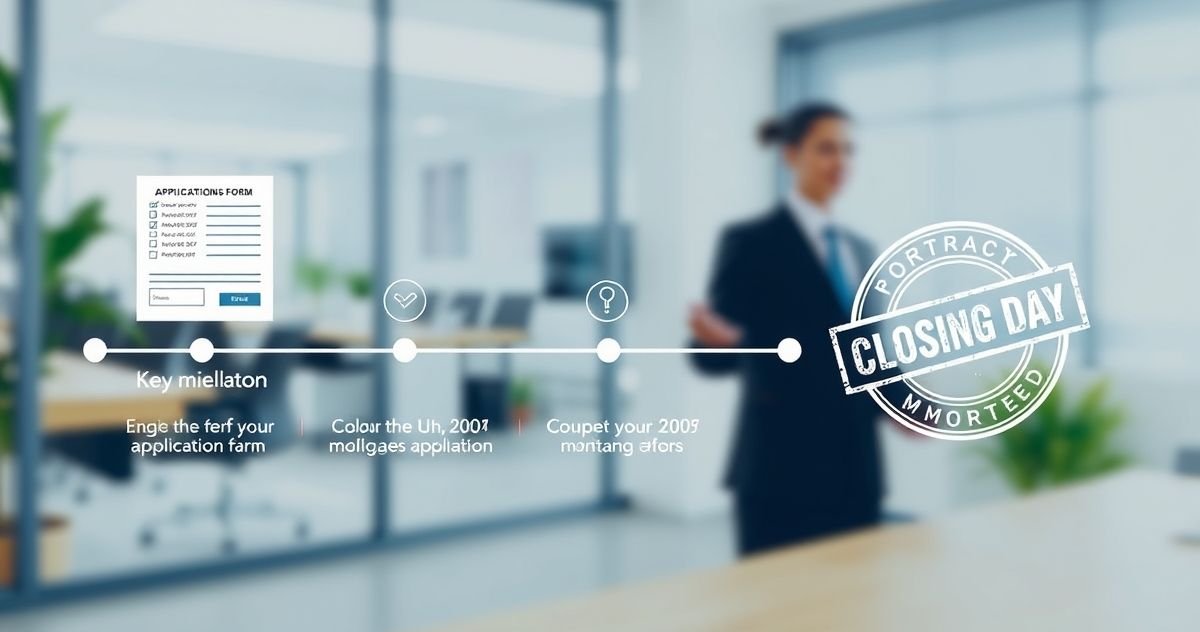The application to closing timeline charts the entire mortgage process from loan application submission to closing day — the point when the buyer officially takes ownership of the home.
The national average time to close on a mortgage is about 47 days, according to ICE Mortgage Technology, though it can vary based on loan type, financial situation, and local market conditions.
Here is a detailed breakdown of the key stages:
- Application & Initial Disclosures (Days 1–5):
- Borrowers complete the Uniform Residential Loan Application (Form 1003) and provide financial documents such as pay stubs, tax returns, and bank statements.
- Lenders must send a standardized Loan Estimate within three business days, outlining estimated interest rate, payments, and closing costs.
- Getting pre-approved before house hunting can reduce this phase significantly.
- Processing & Underwriting (Days 5–25):
- Loan processors organize documents and check completeness.
- Underwriters conduct in-depth verification of income, assets, debts, and credit history to assess borrower risk.
- Appraisal, Title Search, & Inspection (Days 10–30):
- The lender orders an appraisal to confirm the home’s market value.
- A title company verifies the seller’s legal title and checks for liens or claims.
- Buyers typically arrange a home inspection to identify property issues.
- Conditional Approval & Clear to Close (Days 25–45):
- Underwriter issues conditional approval, often requiring additional documents.
- Upon satisfying conditions, the loan receives “Clear to Close” status.
- The lender provides the Closing Disclosure at least three business days before closing, detailing final loan costs. Refer to our Closing Disclosure guide for more.
- Closing Day:
- Buyers sign final legal paperwork, pay closing costs and down payment, and receive the keys.
Common delays to avoid:
- Disorganized or late document submission.
- Major financial changes like job switches or new debts.
- Low appraisals leading to renegotiations.
- Slow communication with lenders.
Understanding this timeline helps buyers and real estate professionals manage expectations and keep the mortgage process on track. For a visual overview, see our Mortgage Loan Cycle article.
Sources:
- ICE Mortgage Technology Origination Insight Report, 2025
- Consumer Financial Protection Bureau Mortgage Closing Process
- NerdWallet, “How Long Does It Take to Close on a House?”

